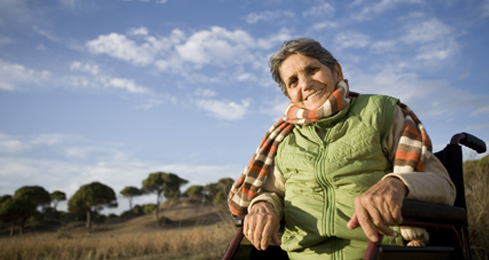
Phone: 212 520 1686
Email: info@yourcpf.org
ADULTS WITH CP

The majority of individuals with CP will experience some form of premature aging by the time they reach their 40s due to the extra stress and strain the disability puts upon their bodies. The developmental delays that often accompany CP keep some organ systems from developing to their full capacity and level of performance. As a consequence, organ systems such as the cardiovascular system (the heart, veins, and arteries) and pulmonary system (lungs) have to work harder and they age prematurely.

THE RATE OF DEPRESSION IS
3 TO 4 TIMES
HIGHERIN PEOPLE WITH
DISABILITIESSUCH AS CP
FUNCTIONAL ISSUES AT WORK
The day-to-day challenges of the workplace are likely to increase as an employed individual with CP reaches middle age. Some individuals will be able to continue working with accommodations such as an adjusted work schedule, assistive equipment, or frequent rest periods.
DEPRESSION
Mental health issues can also be of concern as someone with cerebral palsy grows older. The rate of depression is three to four times higher in people with disabilities such as CP. It appears to be related not so much to the severity of their disabilities, but to how well they cope with them. The amount of emotional support someone has, how successful they are at coping with disappointment/stress, and whether or not they have an optimistic outlook about the future all have a significant impact on mental health.
POST-IMPAIRMENT SYNDROME
This syndrome is marked by a combination of pain, fatigue, and weakness due to muscle abnormalities, bone deformities, over-use syndrome, sometimes also called repetitive motion injuries, and arthritis. Individuals with CP may use up to three to five times the amount of energy that able-bodied people use when they walk and move about.
OSTEOARTHRITIS & DEGENERATIVE ARTHRITIS
Musculoskeletal abnormalities that may not produce discomfort during childhood can cause pain in adulthood. For example, the abnormal relationships between joint surfaces and excessive joint compression can lead to the early development of painful osteoarthritis and degenerative arthritis. Individuals with CP also may have limited strength and restricted patterns of movement, which puts them at risk for overuse syndromes and nerve entrapments.
PAIN
Individuals with CP may have pain that can be acute or chronic, and is experienced most commonly in the hips, knees, ankles, and the upper and lower back. Individuals with spastic CP may have an increased number of painful sites and worse pain than those with other types of cerebral palsy. Treatments include spasticity management aimed at correcting skeletal and muscle abnormalities.
OTHER MEDICAL CONDITIONS
Adults have higher than normal rates of other medical conditions secondary to their cerebral palsy, such as hypertension, incontinence, bladder dysfunction, and swallowing difficulties. Scoliosis is likely to progress after puberty, when bones have matured into their final shape and size.






